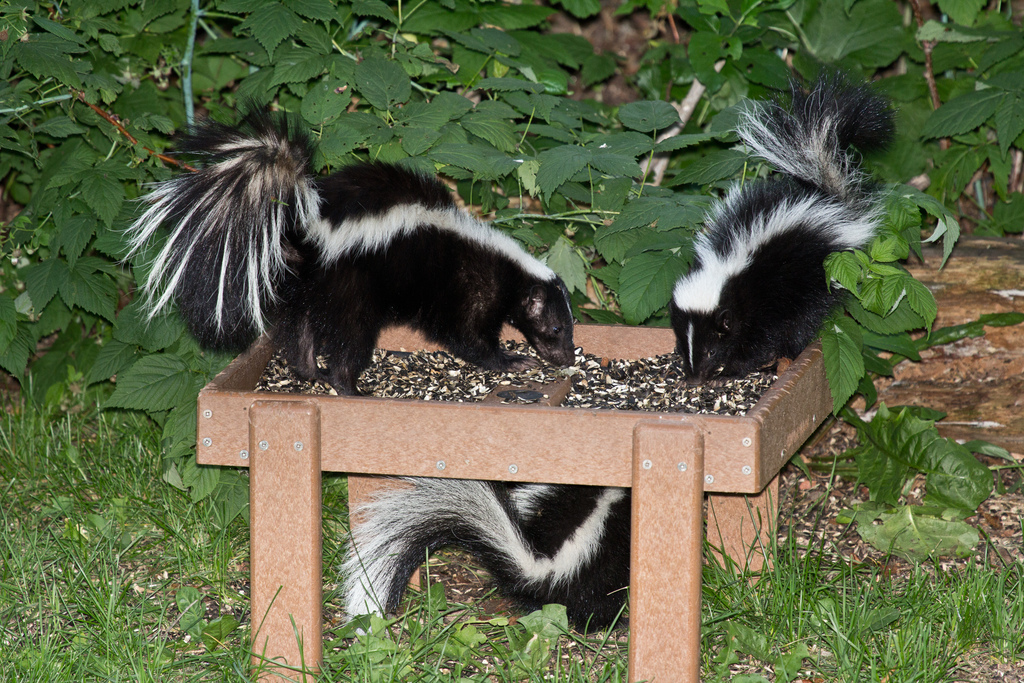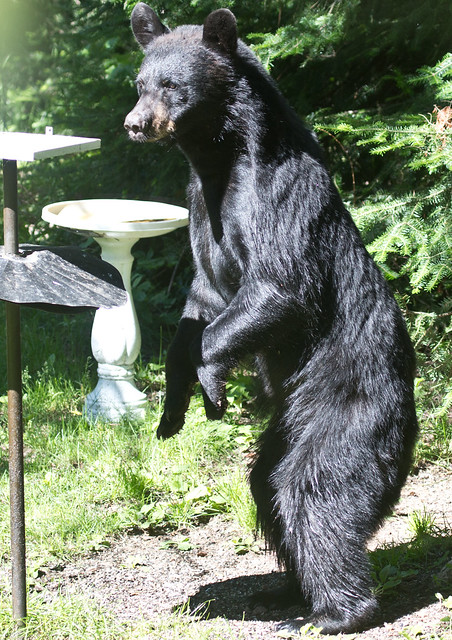40. Find safe ways to solve problems with squirrels, raccoons, and other mammalian wildlife.

When we improve our backyard habitats for birds, other wildlife moves in as well. Deer, raccoons, skunks, foxes, bears, coyotes, rabbits, and other wild animals are often attracted to human habitation, especially where they can find appropriate food, shelter, and water. And as we humans voraciously gobble up more natural habitat for our own homes, we give native wildlife fewer options. It’s better for the natural environment when we build our homes in already settled areas and don’t contribute to sprawl. But out of necessity, more wildlife is finding its way into major urban areas. When these wild animals are hit by cars, their carcasses provide huge amounts of calories that maintain unnaturally high populations of crows and other scavengers and also allow dangerous pathogens to flourish.

Where such wildlife is uncommon, home owners may welcome the sight of such interesting and beautiful creatures, but when their populations get out of hand, trouble follows. Deer and rabbits can seriously damage gardens and wild plants, as well as natural habitat. Deer also eat a surprising number of eggs and chicks of ground-nesting species and are a vector for Lyme disease. Raccoons, skunks, foxes, and coyotes can harm pets and may harbor rabies. Raccoons not only eat eggs and nestlings but sometimes kill and eat sleeping adult birds as well, including fairly large ones. (“Tex,” the famous Whooping Crane imprinted on George Archibald of the International Crane Foundation, was killed by raccoons.”) Bears can damage bird feeders and pose a danger to pets and humans. Squirrels and chipmunks occasionally damage homes, foundations, sidewalks, and gardens. Even where outright squirrel damage is negligible, many people don’t like them eating at bird feeders.

When mammal populations are at normal levels, they can enrich our lives and are an essential part of a healthy ecosystem. But how do we keep their numbers manageable? First and foremost, never subsidize unwanted mammals in your yard. Never leave dog food out where coyotes, foxes, or other animals (including crows) may find it. If mammals are attracted to your brush pile, set out clumps of dog or cat fur to dissuade them. If you maintain a feeding station and scatter seeds on the ground for migrating birds, provide only as much as the birds can consume in a day, and rake up spilled seed regularly. Take corn off the menu if it attracts unwanted mammals. If you have problems at suet feeders, stop offering it or bring it in at night. To keep raccoons (and sometimes squirrels) off you feeders, smear a light coating of petroleum jelly on a short length of the pole. Raccoons are fastidious and don’t like to get their fur messy. Don’t use Tanglefoot or anything sticky. Various peppers are used to discourage squirrels from eating birdseed, but I am concerned that even though birds don’t necessarily taste the pepper, it may injure their mouth or esophagus.
From 101 Ways to Help Birds, published by Stackpole in 2006. Please consider buying the book to show that there is a market for bird conservation books. (Photos, links, and updated information at the end of some entries are not from the book.)